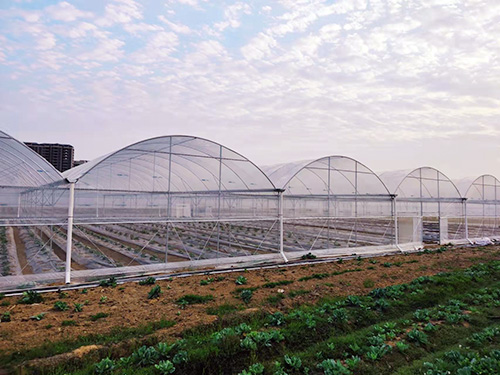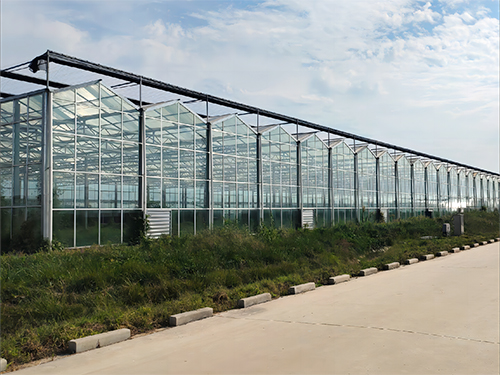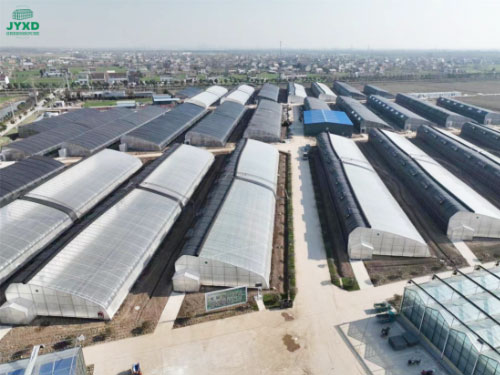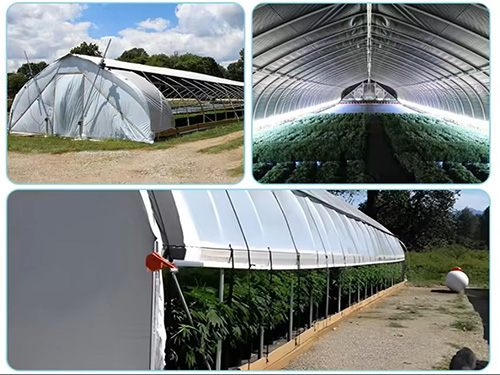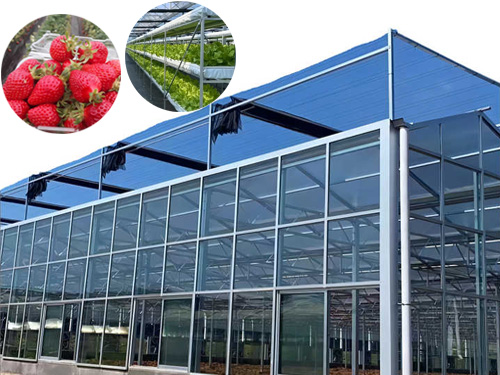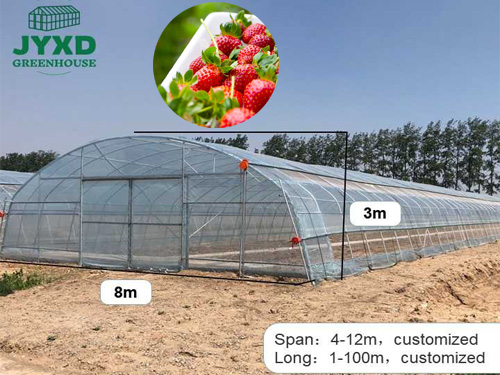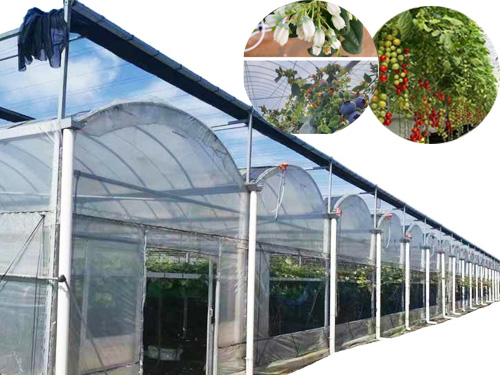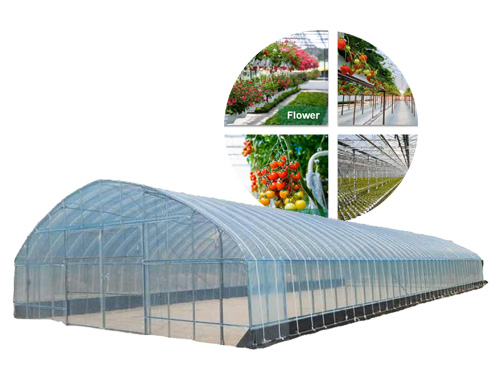NEWS DETAILS
NEWS INFORMATION
Mountain Greenhouses: Effective Planning and Construction in Complex Terrain
AUTHOR:jyxd-greenhouse DATE:2025-01-02 10:22:31 HITS:146
Building greenhouses in mountainous regions presents unique challenges. The uneven terrain, steep slopes, poor soil stability, and high rainfall all demand more refined planning and construction strategies. Nevertheless, with scientific planning, technological support, and engineering design, it is possible to achieve efficient and sustainable greenhouse cultivation in mountainous areas. This article will outline the key points for constructing mountain greenhouses, helping you achieve high yield, efficiency, and sustainable agricultural development in complex terrain.
Challenges Mountain Greenhouses Face
1. Complex Terrain
The mountainous terrain is characterized by significant elevation changes and steep slopes, which place higher demands on greenhouse layout and structural design.
2. Water Resource Management Challenges
High or low rainfall makes efficient collection, storage, and irrigation a major challenge.
3. Soil Stability Issues
Sloping soils are susceptible to soil erosion, landslides, and other instability problems.
4. Uneven Light Distribution
Differences in light intensity across various altitudes and orientations affect plant growth.
5. Wind and Snow Resistance
Mountain regions often experience strong winds and snowfall, requiring sturdier greenhouse structures.
Key Planning and Technology for Mountain Greenhouse Construction
1. Scientific Terrain Planning
· Terraced Greenhouse Design
Constructing terraced greenhouses on slopes effectively controls soil erosion while maximizing spatial utilization. Each terraced layer can independently control irrigation and temperature, optimizing resource allocation.
· Terrain Analysis and Assessment
Conduct a comprehensive evaluation before construction through terrain surveying, soil testing, and other methods. This helps understand the terrain characteristics, soil structure, and water resource distribution to develop a scientifically sound greenhouse layout plan.
2. Stable and Durable Structural Materials
· High-Strength Steel Frameworks
Using high-strength stainless steel or hot-dip galvanized materials enhances the greenhouse's resistance to wind and snow, ensuring structural stability.
· Composite Materials and Lightweight Design
Incorporating composite materials and carbon fiber lightweight materials improves wind resistance while simplifying construction.
3. Efficient Water Resource Management Systems
· Rainwater Collection and Storage Systems
Install rainwater collection devices around the greenhouse. Collected rainwater can be stored in tanks and used for irrigation purposes.
· Drip Irrigation and Micro-Sprinkler Technology
Implement drip irrigation and micro-sprinkler systems inside the greenhouse to reduce water waste and meet crop irrigation needs efficiently.
· Groundwater Pumps and Filtration Systems
In areas with abundant groundwater, install groundwater pumps and filtration systems to maintain stable water quality and supply.
4. Disaster Resistance Protective Measures
· Reinforced Greenhouse Structures
Strengthen the greenhouse design with diagonal braces and cross supports to enhance resistance to wind and snow.
· Soil Stabilization and Slope Protection
Use engineering solutions such as stone walls, wooden piles, and concrete retaining walls to stabilize sloping soils and prevent landslides and soil erosion.
5. Light and Ventilation Control Technology
· Supplementary Lighting and Shading Systems
Install LED supplementary lighting in shaded areas to improve light absorption efficiency. Use shading nets to control excessive sunlight.
· Intelligent Ventilation Systems
Incorporate automated ventilation openings and fans in the greenhouse structure. These systems automatically adjust ventilation based on internal and external temperatures to maintain optimal airflow.
Practical Mountain Greenhouse Construction Cases and Experiences
1. Terraced Fruit and Vegetable Greenhouse Project
A farmer in a mountainous region adopted a terraced greenhouse design, utilizing the slope space effectively. Each layer had an independent irrigation and temperature control system. This project not only increased crop yields but also effectively prevented soil erosion.
2. High-Strength Steel Vegetable Greenhouse
In high-altitude areas, a greenhouse with a stainless steel frame was built, effectively withstanding strong winds and snowfall. Supported by an efficient irrigation system, it achieved consistent year-round yields.
3. Rainwater Recovery and Drip Irrigation Integration
In greenhouses built in mountainous areas, a combination of rainwater collection devices and drip irrigation systems effectively utilized natural water resources, significantly saving water and reducing operational costs.
Sales and Market Strategies to Increase Economic Benefits
1. Targeting High-End Markets and Brand Certification
Obtain certifications such as organic and green agriculture to increase market recognition, attracting high-end consumers.
2. Multi-Channel Sales and Partnerships
Collaborate with local farmers' markets, e-commerce platforms, and restaurants to quickly distribute greenhouse-produced agricultural products to the market.
3. Creating Experience and Educational Bases
Transform the greenhouse into a farm experience base open to visitors and students, offering tours and picking activities. This increases experiential revenue and boosts brand visibility.
Conclusion
Constructing greenhouses in mountainous regions requires a comprehensive consideration of terrain, materials, climate, and water resources. Through scientific planning, durable material choices, intelligent irrigation and temperature control systems, and effective protective measures, it is possible to achieve high yield and sustainable agricultural development in complex terrain. If you are seeking a professional solution for constructing a mountain greenhouse, contact our technical team. We offer customized support and expertise to help you achieve greater success in mountainous agricultural development.
Hebei Juyou Xinda Greenhouse Facilities Co.,Ltd.
Copyright © 2024-2025 https://www.jyxd-greenhouse.com. All Rights Reserved Hebei Juyou Xinda Greenhouse Facilities Co.,Ltd.Copyright





 Current Location:
Current Location: